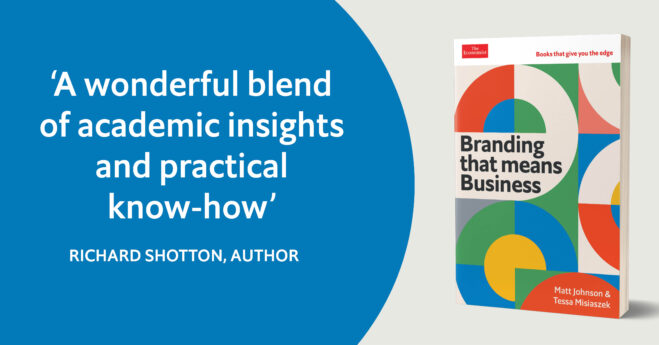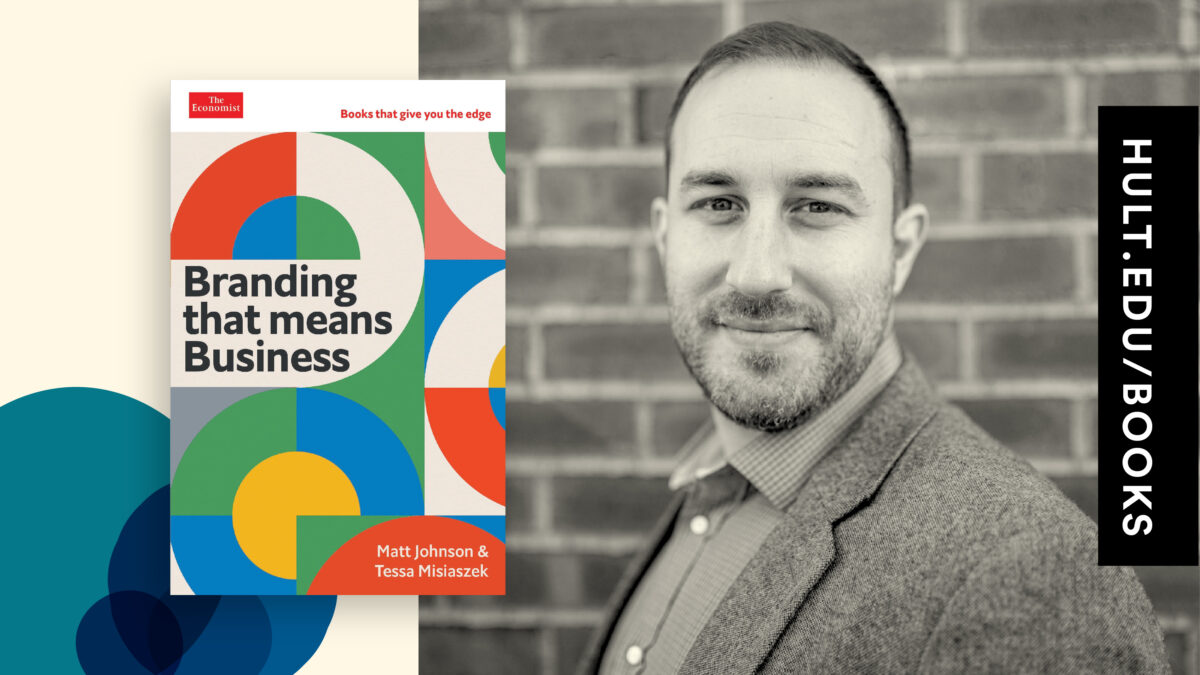Brands Need to Put Consumers at the Heart of Their Strategy
Matt Johnson, PhD, is a neuroscientist, author, and professor of consumer psychology at Hult International Business School. As a consumer scientistist, his specialty lies in applying a human-centric perspective to marketing. In his newest book, Branding That Means Business, Matt Johnson and his co-author, Tessa Misiaszek, combine the latest business thinking with psychology, sociology, and anthropology to show readers how to harness a new perspective on branding—one that goes beyond the fundamentals of business and into the fundamentals of human behavior.
Why businesses need great branding
Fans of Simon Sinek will know his famous adage: “Consumers don’t buy what you do, they buy why you do it.” This is a compelling idea, but it only gets us part of the way there.
The “what”—your product—does of course make a massive difference. There’s a difference between buying a car that works vs. buying a car that doesn’t. And while consumers are sensitive to your motivations, what’s actually most crucial here isn’t your motivations as a brand. It’s the motivation of your consumers.
But how can you find that?
In each marketing class I teach at Hult, we go through an exercise called the “true why.” First, I ask my students each to pick their favorite brand. The results aren’t too unexpected. The most popular global brands feature heavily: Apple, Nike, Coke, and AirBnB are all common responses.
Then I ask them why. Why is this your favorite brand? And here, again, the answers aren’t too out of the ordinary. For Apple, they “have the best tech.” For Nike, they “make me feel cool.”
But then we really get into the true why. The why behind the why. Why does it matter to have the best tech? Why does it matter to feel cool? And this is where we get into uncharted territory.
The true why test forces us to get to this deeper level of analysis. And, ultimately, how we can utilize that to develop, craft, and refine our brand strategy.
Why does it matter to have the best tech? Why does it matter to feel cool? And this is where we get into uncharted territory.
The role of the “true why” in brand strategy
But before we get to the test itself, we discuss what the “true why” represents, and its role within a brand’s strategy. At the heart of what the brand should deliver is the consumer’s core motivation. The brand must address the deeper, human needs that a customer has that drive their behavior, such as the need for security, accomplishment, self-esteem, belonging, or perhaps family.
This goes beyond the simple, obvious need the product might be solving. Lego, for example, makes toys for kids but the essence of what it delivers is the ability to “creatively pursue mastery.”
This speaks directly to a deep, core motivation of the consumer. In this way, the brand goes beyond sheer utility and into a deeper, emotional domain that the product on its own doesn’t deliver.
A stellar product imbued with a deeper motivation is a formidable combination. Think about Airbnb. At a basic level, the need is simple and straightforward: a place to stay that isn’t a hotel.
But the key insight that enabled Airbnb to flourish was tapping into a much deeper need that its competitors had overlooked: that sense of belonging.
And this brings us back to the “true why” test.
The “true why” test
Finding the true consumer motivation requires market research and consumer insight. The end goal is to find the ultimate “why” of the consumer. It requires you to ask a series of probing questions until you get to the ‘true’ motivation. Start with the product, and then go deeper.
Consider this “true why” for Airbnb:
- Why is this product important? Not only are hotels overpriced—they are generic and unspecial.
- Why does that matter? People don’t want to feel like tourists when they visit a new place; they want to see it like the locals do.
- Why does this matter? Because they want to have authentic experiences, not manufactured ones. They want to feel they’re genuinely experiencing a place as an insider.
- Why does that matter? Because they travel to make their lives richer.
- Why does this matter? Because the moments we remember are not the mundane ones in front of a computer or doing laundry, but the ones when we truly feel a part of something, where we belong to something bigger.
- Why does that matter? Because we’re all going to die.
Almost every time we do this, the “true why” will end with this grim realization. This is no accident, as this is arguably the defining feature of the human condition. But as I tell my students, once you get morbid, you’ve gone a little too far. Go back to your last step and you’ll find the best motivator for a consumer to become devoted to your brand.
For AirBnB this was a key insight: fundamentally, people want to belong. This became the focus of their first major rebrand, and directly inspired their tagline: “Belong Anywhere”.
Airbnb is a great example for the power of consumer-centric brand positioning.
The power of the brand
As I share with my students, Airbnb is a great example for the power of consumer-centric brand positioning. I impress upon them that while Airbnb is often heralded as an innovative product, the basic idea—a platform that allows users to rent out their homes—wasn’t new at all. HomeAway launched in 2004, and Vrbo started way back in 1995, when Airbnb’s founder Brian Chesky was 14.
So while their core product was crucial, the way they positioned the brand made a massive difference. And identifying the “true why” was crucial to this success.
This exercise forces us to take a deeper, psychological—even philosophical—perspective on the world of branding. It equips students with a powerful, analytical tool to understand brand strategy. But what I enjoy most about it is that it provides a unique window into the lives, minds, and values of my students.
Branding, at its best, is personal. Oftentimes, understanding the brands we love can provide us with insights—not just about branding, but about ourselves.




